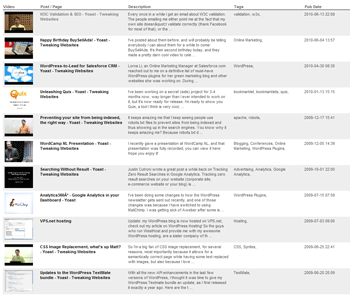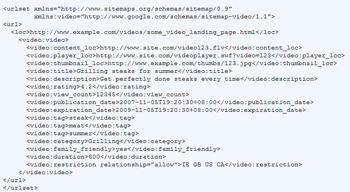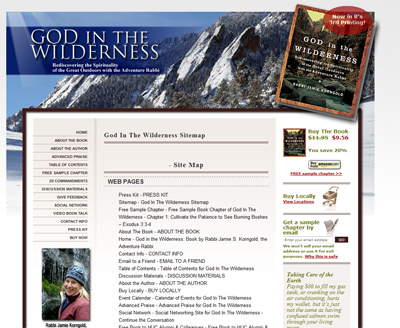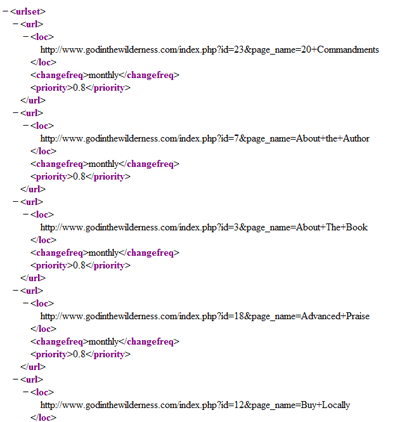|
 Background: Background:
If
a picture is worth a thousand words, a professional-looking
video can be worth even more.
Google
(and other search engines) know that people who
visit websites often view videos to learn more
about a company’s products, services or mission.
Every
minute, more than two hours of video is uploaded
to YouTube. However, a search engine like Google
can’t really understand the content inside a video.
Just as a search engine has very limited abilities
to be able to read words "locked" in
a graphic, they can’t understand the words, content
and images within a video (although that may change
in the future).
Google,
for example, uses tags, video titles and descriptions
to understand the content of a video, along with
geographic location (i.e. Boulder, Colorado).
With
the explosion of video content on the Web, it’s
more difficult than ever to make sure that search
engines can cut through the cute home videos of
cats playing piano, and deliver relevant search
results for videos on your site.
What’s
a Video Site Map?
According
to Google’s Website, a Video Sitemap gives Google
information about your video content, and tells
them about content on your site they might not
otherwise discover.
Just
like a sitemap on a site that’s designed for humans
to read (it lists every page of your site), a
video site map lists every page of your site that
has video content on it, including a description
of the video. (Not sure what a sitemap is all
about? Read the description
below >>)
Here’s
how an XML-based video sitemap will be displayed
to a human:

Here’s
an example of an XML-based video sitemap, meant
to be read by a search engine:

Video-Specific
Tags for a Video Sitemap:
The
following tags are a list of tags you can use
to tell Google about your videos:
- <loc>
– The location of the video; must be a unique
URL
- <video:thumbnail_loc>
– The link to the .jpg or .gif of the thumbnail
of the video
- <video:title>
– The title of the video; this is limited to
100 characters
- <video:description>
– The description of the content of the video;
limited to 2048 characters.
- <video:duration>
– The duration of the video (in seconds).
- <video:count>
– The number of times the video has been viewed
- <video:publication_date>
– The date the video was first published
- <video:tag>
– The tags that describe the video. For example,
a video about grilling food may belong in the
Grilling category, but could be tagged "steak",
"summer", and "outdoor".
Limited to 32 tags.
- <video:category>
– The video’s category, such as cooking, religion
or education.
There
are other more technical tags, too, but these
are the underlying tags that describe your video
to Google.
XML
Sitemaps:
If
you already have a sitemap for your website in
XML, you can create a second one for videos.
You
can create a Sitemap based on the Sitemap protocol,
and then submit the feed directly to Google or
post a link on your site.
What’s
A Sitemap?
Just
a few years ago, the philosophy about sitemaps
went something like this: If your customers need
to use a sitemap to find their way around your
website, you haven’t done your job organizing
your content and creating a navigational system
that is easy to understand.
But
sitemaps are now back in favor. Why? It’s less
about human visitors and more about search engines.
What
is a sitemap? A sitemap is page that lists all
of the other pages on your site, usually in a
bulleted list.
Here’s
an example of a sitemap:

As
I’ve discussed before, search engines are easily
confused. Many pages of a website are often ‘hidden’
behind tricky menus or drop-down lists. Or, the
links to reach a specific page are too deep (i.e.
more than a couple of pages down from the home
page).
A
sitemap, linked from the home page of the site,
will list every page of your site in one convenient
place.
When
a search engine visits your site map, it’s very
easy for them to then get a list of every page
on your site, and then crawl, digest and include
all of your content in their system.
We
generally recommend having the link to your sitemap
on the bottom footer navigation of your site.
But
you need to make sure that as your site changes,
your sitemap is updated. Otherwise, Google and
others may not index the latest pages placed on
your site. Our PageDirector system, for example,
automatically updates the sitemap each time a
page is added, or the name of a page is changed.
And
even better than an HTML sitemap is an XML sitemap.
An XML sitemap is a sitemap that is specifically
formatted for search engines like Google. It’s
a machine-readable version that allows you to
specify all of the pages of the site.
Here’s
an example of an XML sitemap:

Adding
an XML sitemap ensures that a site will get indexed
much more quickly and more rapidly than not using
this method at all.
For
the site, www.GodintheWilderness.com,
(a site devoted to my wife’s book that’s now in
it’s 3rd printing by Random House), the XML sitemap
allowed the site to be indexed in 3-4 days vs.
the usual 3-4 months. (But then again, it’s my
wife… so of course she gets all of the top-shelf
website development stuff.
Summary:
If
you have a lot of video on your site, a Video
Sitemap can help with your search engine optimization
and allow people to find your videos more easily.
|

